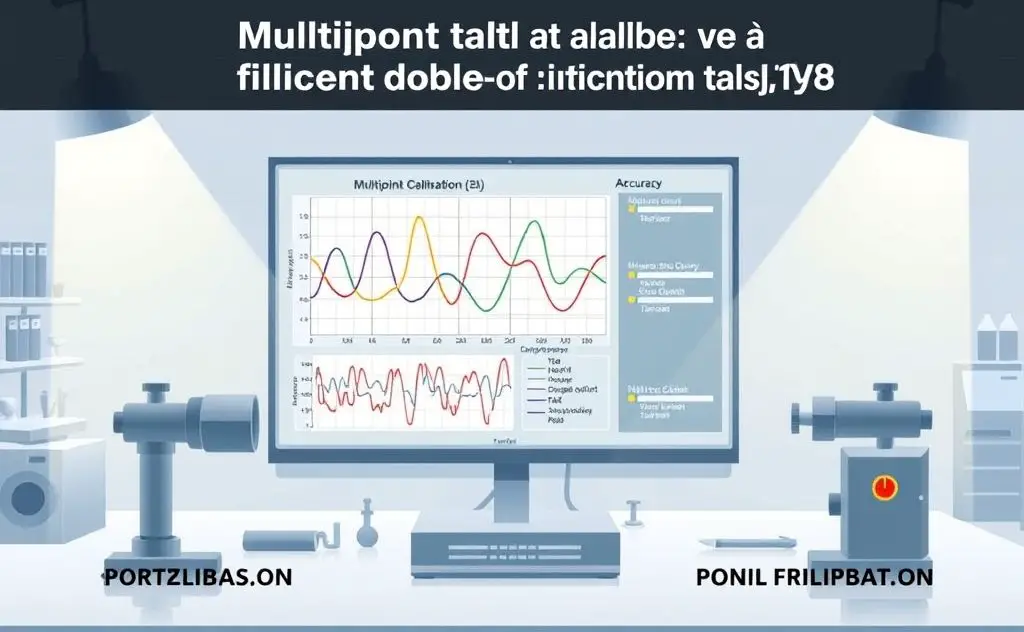Differences between one point and multipoint calibration: One-point calibration adjusts a sensor at a single reference point, ensuring accuracy at that specific value, while multipoint calibration involves multiple reference points across a range, enhancing precision and reliability throughout the sensor’s operational span.
Calibration is essential for accurate measurements in scientific and industrial applications. Choosing between one-point and multipoint calibration depends on your specific needs and the nature of your equipment. This guide explains the differences, advantages, and best use cases for each method.

What Is One-Point Calibration?
One-point calibration uses a single reference point to adjust an instrument. It corrects for a constant offset across the measurement range. This method is quick and simple but has limitations.
How It Works
A single reference value is compared to the device’s reading. The difference is used to create an offset correction. This adjustment applies to all measurements within the range.
When to Use It
- When the device has a consistent offset error
- For quick checks in field applications
- When working with stable, linear sensors
Example Applications
One-point calibration works well for:
- pH meters
- Simple pressure gauges
- Temperature sensors with known linearity

What Is Multipoint Calibration?
Multipoint calibration uses multiple reference points (typically 3-11) to adjust an instrument. It provides better accuracy across the entire measurement range.
How It Works
The instrument is tested at several points throughout its range. A calibration curve is created to account for non-linear errors. This method catches inconsistencies that one-point calibration might miss.
When to Use It
- When high accuracy is critical
- For non-linear instruments
- When validating new methods or equipment
Example Applications
Multipoint calibration is essential for:
- Analytical balances
- Precision pressure transducers
- Chromatography equipment
Key Differences Between Methods
| Factor | One-Point | Multipoint |
|---|---|---|
| Time Required | Fast (minutes) | Slow (hours) |
| Accuracy | Good for linear devices | Excellent for all devices |
| Cost | Low | High |
| Error Detection | Only offset errors | All error types |
Choosing the Right Method
The choice depends on your specific needs:
When One-Point Works Best
Use one-point calibration when:
- You’re working with known linear instruments
- Time is limited
- Budget constraints exist
For example, when working with oil-filled radiators, a simple temperature calibration might only need one point if the sensor is known to be linear.
When Multipoint is Necessary
Choose multipoint calibration when:
- Accuracy is critical
- Working with non-linear instruments
- Validating new methods
In complex systems like tankless water heater recirculation systems, multipoint calibration ensures proper temperature measurements across the full operating range.
Real-World Examples
Case Study: Analytical Chemistry
A lab using UV-Vis spectroscopy found their single-point calibration worked for tryptophan analysis because the intercept wasn’t significantly different from zero. However, when they modified the method for a different compound, multipoint calibration became necessary as shown in research from Element Lab Solutions.
Industrial Pressure Measurement
Pressure transducers in industrial settings often require multipoint calibration. As noted by SRP Control Systems, this accounts for potential non-linearities across the pressure range.
Advanced Considerations
Statistical Validation
Excel’s regression analysis can help determine if one-point calibration is sufficient. Look at the intercept’s 95% confidence interval – if zero falls within this range, one-point may work.
Method Transfer Challenges
When transferring methods between instruments or applications, always verify calibration requirements. What worked in one context may fail in another, as seen in chromatography applications.
Equipment-Specific Factors
Some devices, like those used in ceramic heating systems, may have unique calibration requirements due to their operating characteristics.

